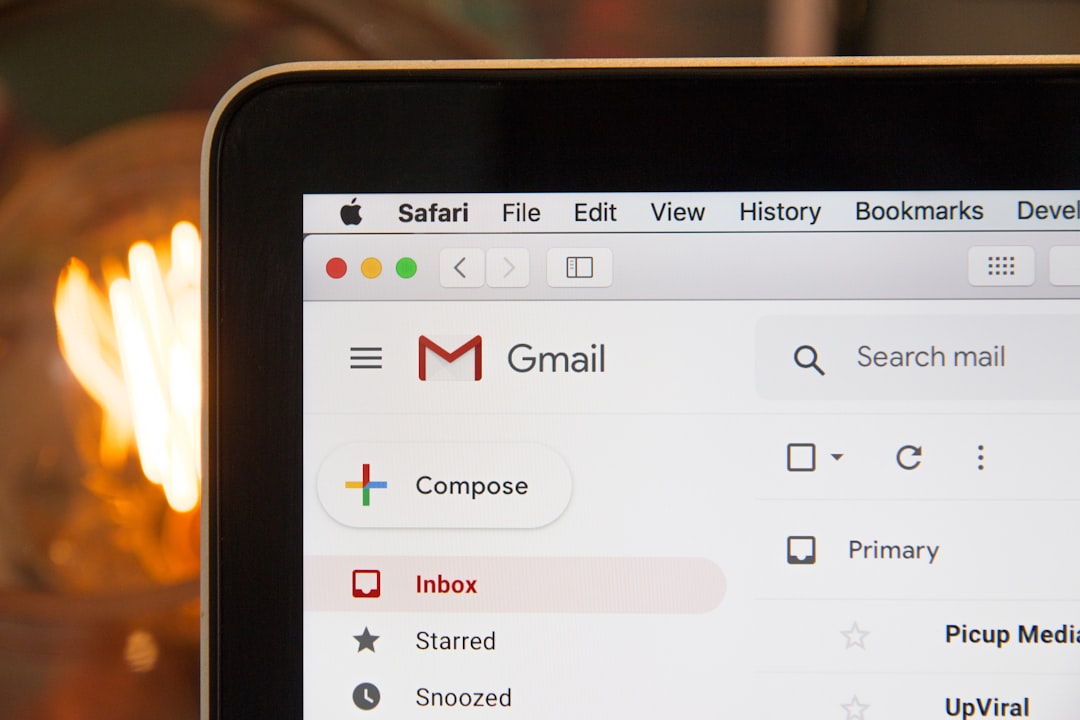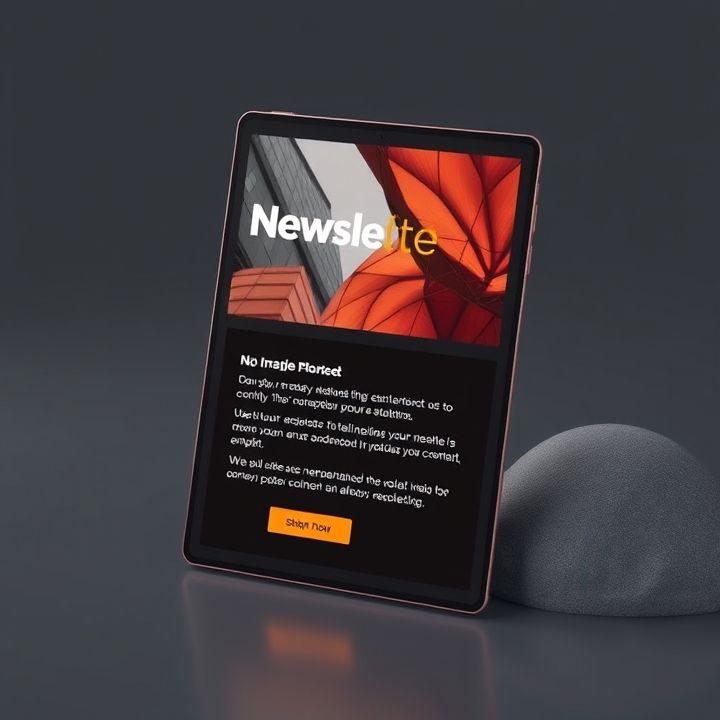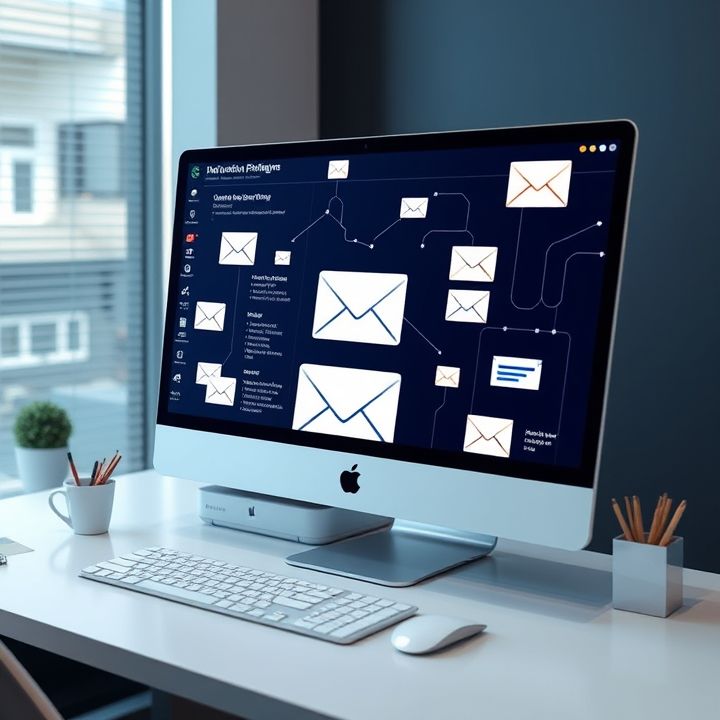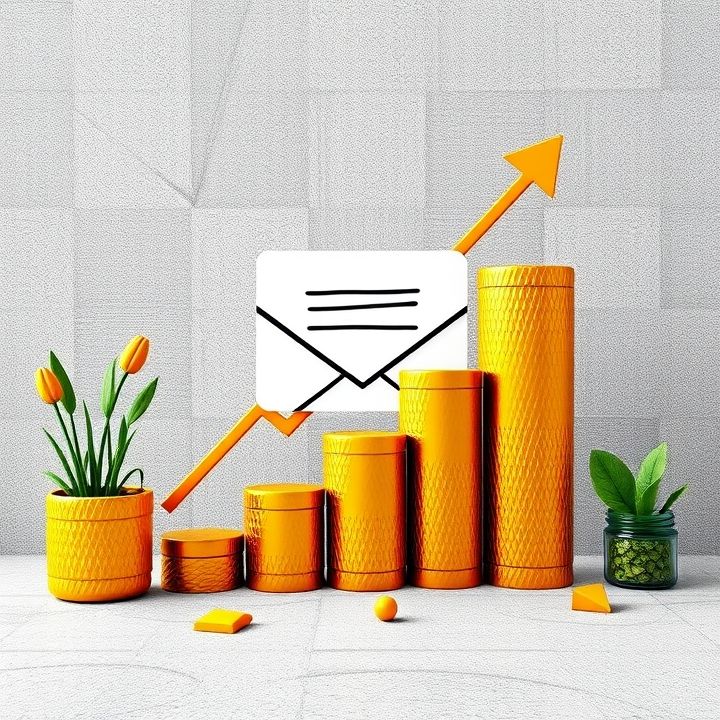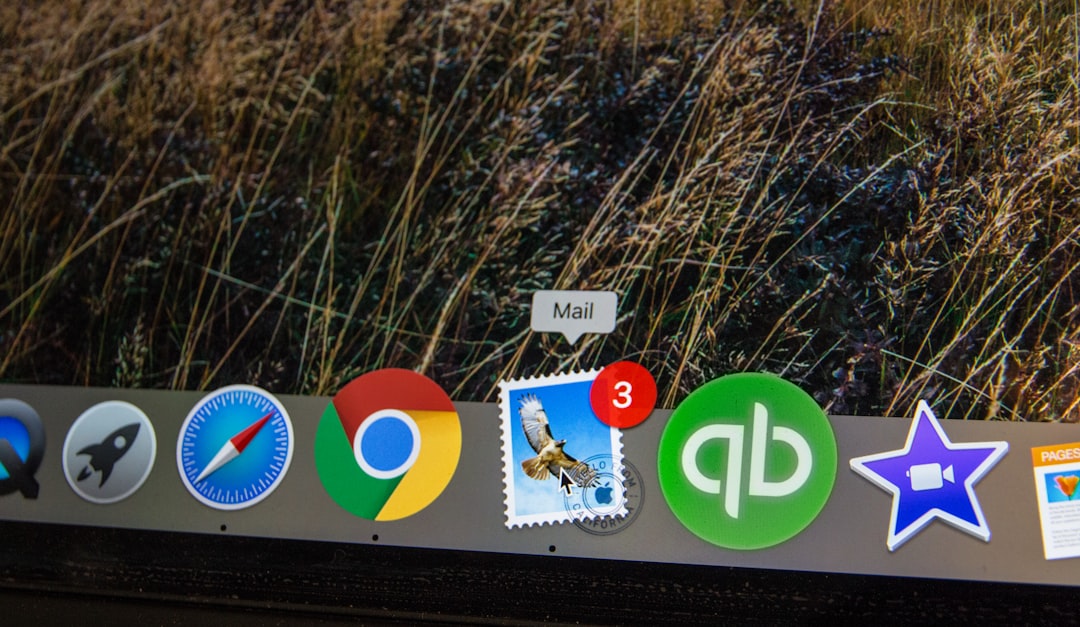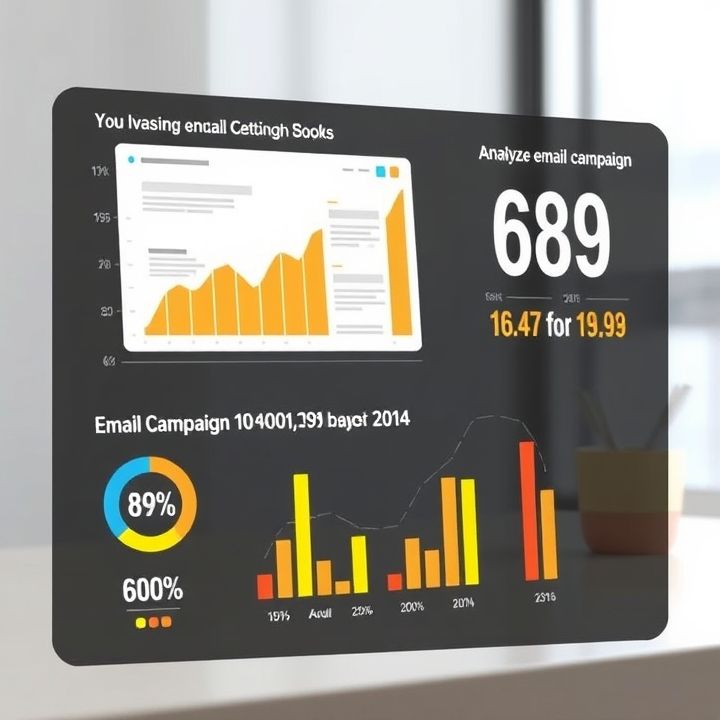Table of Contents
- Introduction
- Crafting personalized and relevant messaging
- Utilizing urgency and scarcity to drive action
- Incorporating emojis to capture attention
- Testing and analyzing pre-header performance
- Aligning pre-header text with subject line
- Keeping pre-header text concise and impactful
- Integrating dynamic content for engagement
- A/B testing pre-header variations for optimization
- Conclusion
- Frequently Asked Questions
Introduction
Are you tired of pouring your heart into crafting the perfect email campaign only to watch it languish unread in your subscribers’ inbox? If so, it’s time to amp up your email marketing game with the key ingredient that’s often overlooked — the pre-header text. This powerful, yet frequently underestimated element can transform your open rates from mediocre to magnificent.
Imagine your next email, a masterpiece few will resist opening. But how do you achieve that heightened level of intrigue? This article is your ticket to unlocking the secret formula of email marketing success. We’ll delve into the most compelling tactics to make your pre-header text not just a support act, but the star of the show. Ready to boost those open rates with irresistible charm?
| Tactic | Impact |
|---|---|
| Personalization | Increases engagement |
| Urgency | Encourages instant action |
Let’s get started on this exciting journey to captivate your audience with pre-header text that demands attention and boosts your email open rates to new heights!
Crafting personalized and relevant messaging
Crafting personalized and relevant messaging is crucial when optimizing email pre-header text to increase open rates. By tailoring the message to the recipient’s interests, behavior, or past interactions, marketers can create a sense of relevance that piques the reader’s curiosity. One effective tactic is to use the recipient’s name or specific details from their last purchase or interaction with the brand. This approach not only captures attention but also demonstrates that the email content is directly related to the recipient’s preferences or needs.
Furthermore, ensuring that the pre-header complements and expands on the subject line can significantly enhance its impact. For instance, if the subject line hints at a special offer, the pre-header can provide additional enticing information, such as limited-time availability or an exclusive benefit. Another strategy is to leverage current events or seasonal themes to align the messaging with what the recipient may be thinking about or experiencing at the moment. Overall, a well-crafted pre-header that resonates personally and contextually with the audience can substantially boost email open rates and pave the way for successful engagement.
Utilizing urgency and scarcity to drive action
Effectively using urgency and scarcity in your email pre-header text can significantly enhance open rates. This strategy taps into the psychological triggers that compel subscribers to take immediate action. By creating a sense of immediacy, you motivate your audience to prioritize opening the email before it’s too late.
To implement urgency in your pre-header text, consider using time-sensitive language such as ‘Don’t miss out,’ ‘Last chance,’ or ‘Ending soon.’ These phrases suggest that an opportunity is fleeting, prompting readers to act quickly to avoid missing out. Similarly, leveraging scarcity entails emphasizing that a particular offer, product, or benefit is available in limited quantities. Using terms like ‘Only a few left’ or ‘Limited stock available’ can instill a fear of missing out (FOMO), further encouraging swift engagement.
Incorporating urgency and scarcity effectively requires maintaining authenticity and honesty in your messaging. Make sure that the urgency or scarcity you highlight is genuine to build trust with your audience. Overall, these tactics are a powerful way to cut through the noise and grab attention, thus boosting email open rates and encouraging prompt action.
Incorporating emojis to capture attention
Incorporating emojis into your email pre-header text is an innovative tactic designed to capture immediate attention, potentially increasing open rates. Emojis function as visual elements that can convey emotions, themes, or key messages quickly and engagingly. When placed alongside text in the pre-header, they bring a splash of color and relatability that text alone may not achieve, drawing the reader’s eye. However, it’s crucial to use emojis strategically. They should complement the pre-header’s content rather than distract from it. Selecting emojis that are relevant to the email’s theme or message can enhance understanding and curiosity with minimal context. Additionally, cultural sensitivity should be considered, as emoji interpretations can vary across different demographics. It’s important to test different emojis to see what resonates best with your audience, leveraging A/B testing to optimize results. Moreover, moderation is key—overusing emojis can cause emails to appear unprofessional. Thus, thoughtful and deliberate integration of emojis in your email pre-header offers a subtle yet powerful way to stand out in crowded inboxes, sparking enough intrigue to prompt the reader to open the email.
Testing and analyzing pre-header performance
Testing and analyzing pre-header performance is crucial in understanding what resonates with your audience and boosts email open rates. To effectively measure this, consider conducting A/B tests by creating two versions of your email with different pre-header texts. This allows you to compare which option results in higher open rates. Ensure each pre-header is clear, concise, and provides additional value to the subject line.
Once data from these tests are gathered, use analytics tools to evaluate performance metrics such as open rates, click-through rates, and other engagement statistics. It is important to segment your audience as different groups may respond differently to the same pre-header. This way, pre-header texts can be tailored to specific segments, enhancing personalization and relevance.
Analyzing trends over time is also vital in determining the long-term effectiveness of your pre-header strategies. Look for patterns or shifts in engagement, and make informed adjustments to refine your approach. Regular analysis not only helps in optimizing the pre-header but also in maintaining the overall health of email marketing campaigns.
Aligning pre-header text with subject line
Aligning pre-header text with the email’s subject line is a crucial tactic to enhance open rates. This alignment serves as a cohesive extension of the subject line, offering additional context or a compelling teaser that entices recipients to open the email. When the pre-header text complements the subject line, it provides a seamless narrative that can enhance curiosity and engagement. For instance, if the subject line promises an exclusive offer, the pre-header text should highlight unique benefits or a time-sensitive element to reinforce urgency.
In addition, consistency between the two elements avoids any disconnect that might confuse or mislead the reader, ensuring they know what to expect upon opening the email. It’s important to craft the pre-header text in a way that is not redundant but instead adds value, enticing the reader to delve deeper into the email content. By creating a coherent and attractive preview, marketers can significantly boost email open rates.
Moreover, using personalized elements or specific call-to-actions in the pre-header can correlate with the subject line to create a more personalized experience. Testing different combinations and analyzing their performance is essential to optimizing both elements effectively, leading to improved engagement and higher open rates.
Keeping pre-header text concise and impactful
Keeping the pre-header text concise and impactful is essential for optimizing email open rates. The pre-header text is the line of text that appears right after the subject line in the email inbox, playing a crucial role in influencing the recipient’s decision to open the email. To make it effective, it is important to keep the text succinct, ideally limited to 40-50 characters. This ensures that the entire message is visible on most devices, preventing critical information from being cut off.
Moreover, the pre-header should complement the subject line, offering additional context or reinforcing the message. Using action-oriented language can prompt the recipient to take immediate action. For example, creating a sense of urgency with phrases like “Limited time offer” or offering a solution to a problem can be enticing.
Incorporating personalization can also significantly boost engagement. By using the recipient’s name or tailoring the message to their preferences, the email feels more relevant and personalized, increasing the likelihood of it being opened. Finally, testing different versions of pre-header text can help determine what resonates best with your audience, allowing for continuous improvement in email marketing strategies.
Integrating dynamic content for engagement
Integrating dynamic content into your email pre-header text is a highly effective tactic for boosting engagement. Dynamic content allows you to personalize the message for each recipient, making it more relevant and compelling. By leveraging data such as the recipient’s name, location, or previous purchase behavior, you can tailor the pre-header text to align with individual preferences and interests. This personalization can create a sense of curiosity and immediacy, enticing recipients to open the email and explore its content further.
Additionally, dynamic content can be used to highlight limited-time offers or include real-time updates that create a sense of urgency. For instance, mentioning a special discount code or showing the countdown to an event within the pre-header text can significantly increase open rates. Strategically using emojis and action verbs also adds a level of engagement by capturing attention and encouraging interaction. Keep in mind, however, that dynamic content should be well-tested across different devices and email clients to ensure compatibility and readability. By optimizing pre-header text with dynamic elements, you not only enhance the likelihood of increased open rates but also build stronger connections with your audience.
A/B testing pre-header variations for optimization
A/B testing pre-header variations is a powerful strategy for optimizing email open rates. This method involves creating two or more versions of your email pre-header text to determine which one performs better with your audience. By testing different approaches, such as altering word choice, length, or messaging tone, you can identify the elements that resonate most effectively with your subscribers.
Begin by segmenting your email list into randomized groups, ensuring that each group receives one version of the pre-header. Monitor the open rates to gather data on which pre-header text generates the highest engagement. Key metrics to track include open rate percentage and click-through rate.
It is essential to consider variables such as seasonality, timing, and the specific content contained within each email when conducting A/B tests. These factors can influence the outcomes, providing insights into how different pre-header strategies align with your overall marketing goals.
By analyzing these results, you can refine your pre-header text to better capture the attention of your audience. Over time, this iterative testing approach can lead to significant improvements in email performance, allowing you to connect more effectively with your audience and drive higher engagement.
Conclusion
In conclusion, mastering the art of crafting compelling pre-header text can truly revolutionize your email marketing efforts. By personalizing messages, leveraging urgency and scarcity, and experimenting with emojis, you can capture and retain your audience’s attention. The strategic alignment of pre-header text with the subject line ensures a seamless narrative, enhancing the likelihood of engaging the recipient. Moreover, keeping the text concise yet impactful guarantees visibility across devices, while integrating dynamic content delivers a personalized experience tailored to individual preferences. Rigorous testing and analysis further refine your approach, allowing you to identify what resonates most with your audience. As you implement these proven tactics, remember that authenticity and honesty remain paramount in building trust with your subscribers. Through continuous optimization, you can achieve remarkable increases in open rates, fostering stronger connections and driving greater engagement with your email campaigns.
